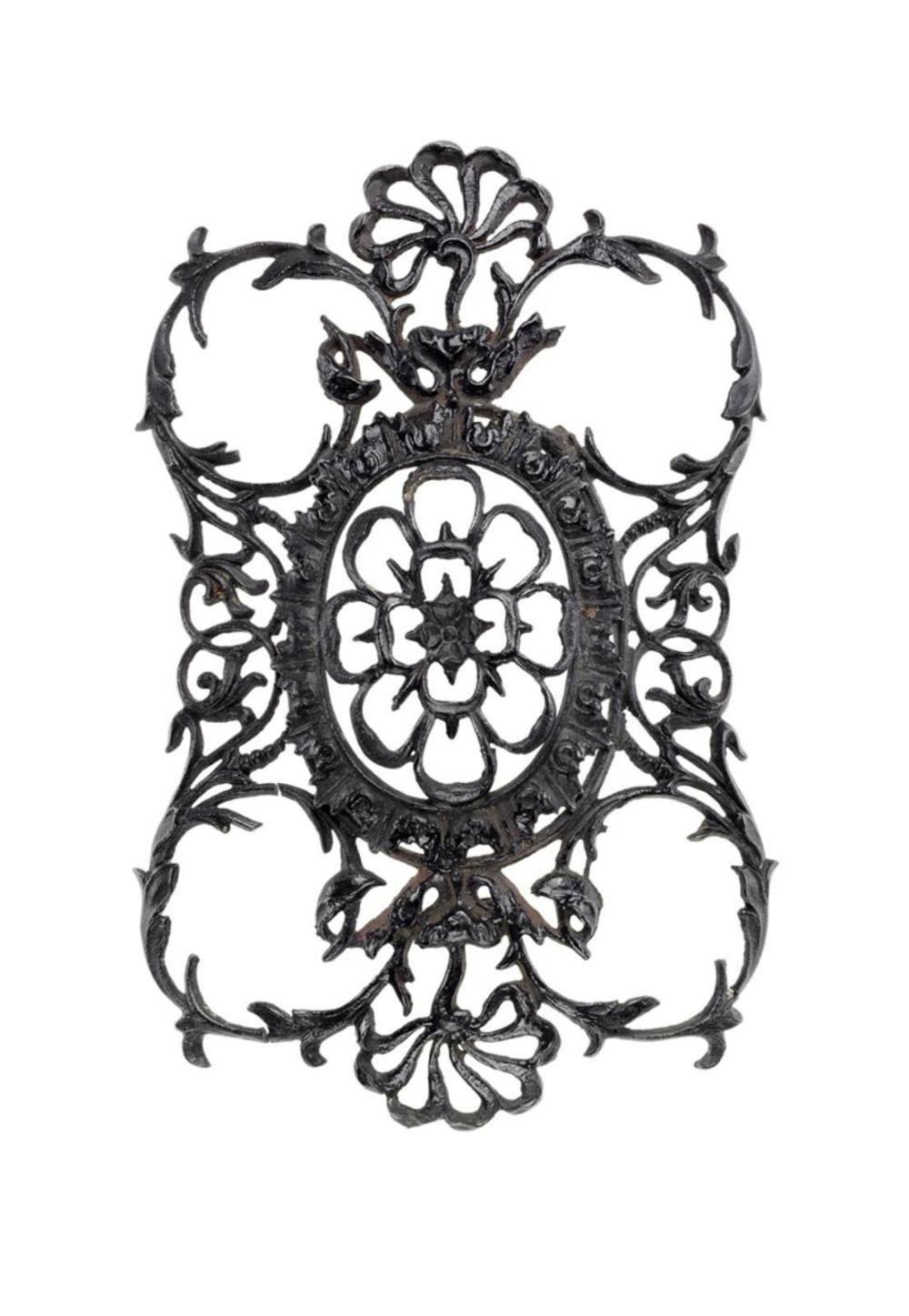Advanced Search 
Berlin ironwork brooch
The Industrial Revolution resulted in tremendous innovations in iron, from enormous architectural wonders to small brooches. By the early years of the 19th century, technological advances in metalwork led to the mass production of iron bijouterie. The inexpensive black-lacquered jewelry was adopted by some as part of mourning dress. During the Napoleonic Wars, Prussians were encouraged to donate their gold jewelry to support the war effort. In return, they were given iron jewelry, some of which included phrases like Gold gab ich für Eisen (I gave gold for iron) as part of the design. This jewelry is also known as Berlin Ironwork or Berlin Iron Jewelry—the city was the center of much of the iron jewelry production. In Berlin alone, more than 160,000 rings are estimated to have been exchanged for jewelry like this. This particular brooch is similar to examples shown at the Crystal Palace Exhibition in London in 1851. The brooch and two bracelets were given by Countess Pulasky of Hungry to Frances Appleton Longfellow, wife of the poet Henry Wadsworth Longfellow, while on a visit to the United States in 1852. Longfellow’s daughters later gave it to the MFA.

Cast iron brooch
Berlin ironwork brooch
German (Berlin)
about 1850
Object Place: Europe, Berlin, Germany
Medium/Technique
Iron
Dimensions
Height x width x depth: 9 x 5 x 1 cm (3 9/16 x 1 15/16 x 3/8 in.)
Credit Line
Gift of Miss Alice M. Longfellow and Mrs. Joseph G. Thorp
Accession Number17.203
ClassificationsJewelry / Adornment – Brooches
The Industrial Revolution resulted in tremendous innovations in iron, from enormous architectural wonders to small brooches. By the early years of the 19th century, technological advances in metalwork led to the mass production of iron bijouterie. The inexpensive black-lacquered jewelry was adopted by some as part of mourning dress. During the Napoleonic Wars, Prussians were encouraged to donate their gold jewelry to support the war effort. In return, they were given iron jewelry, some of which included phrases like Gold gab ich für Eisen (I gave gold for iron) as part of the design. This jewelry is also known as Berlin Ironwork or Berlin Iron Jewelry—the city was the center of much of the iron jewelry production. In Berlin alone, more than 160,000 rings are estimated to have been exchanged for jewelry like this. This particular brooch is similar to examples shown at the Crystal Palace Exhibition in London in 1851. The brooch and two bracelets were given by Countess Pulasky of Hungry to Frances Appleton Longfellow, wife of the poet Henry Wadsworth Longfellow, while on a visit to the United States in 1852. Longfellow’s daughters later gave it to the MFA.
DescriptionBlack rectangular iron brooch with delicate floral design.
